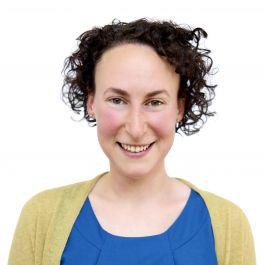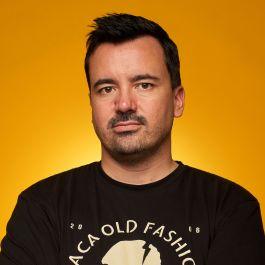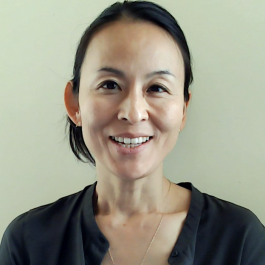How does a product team stay true to its vision?
Well, it depends on the product and vision. And, if company stakeholders are involved, the answer can get a little more complicated.
At logistics software company Flexport, staying true to the product vision means maintaining a constant and transparent stream of communication between the product team and the stakeholders.
At Tinder, because its biggest stakeholders are its members, staying true to the product vision means always keeping them in mind — whether it’s creating tutorials for how to use certain features or sharing stories that humanize the platform.
Although the strategies for staying true to the product vision varies from company to company, the goal is always the same: a purpose to continuously evolve so that you’re providing customers with the best possible product.
Built In caught up with product leaders at 13 companies across the country to gain some insight into the strategies they implement to ensure they’re never straying too far from their North Star.
How to Stay True to Your Product Vision
- Make sure everyone is on board with the same vision
- Create a high-level roadmap as a reminder of your vision
- Create short and long-term milestones
- Keep up communication
- Say “No” when it’s necessary
- Remember why you created your vision in the first place
Honey
Tai Zhang
PRODUCT MANAGEMENT DIRECTOR

The product development team at Honey is constantly performing a balancing act. Product Management Director Tai Zhang said that act involves investing in the consumer web company’s long-term vision while accomplishing shorter-term, tactical goals.
The happy medium?
Saying ‘yes’ to projects that allow team members to build foundational features.
First, briefly tell us about your overarching product vision. What is it, and how do you communicate this vision across the business?
At Honey, our vision is to create a better way to buy online. From something as simple as looking for a working coupon code to figuring out the right product to buy and when to buy it, the world of retail is full of inefficiencies whose costs ultimately get passed onto the consumer. We are working to create the most efficient way for merchants to reach consumers, and in turn, the least expensive way for consumers to do business with merchants.
We believe that understanding the “why” is crucial to how everyone at Honey makes decisions, so we often refer back to the vision aligning everyone to this shared purpose. It is a part of our new employee onboarding and is regularly referenced in our weekly company syncs and quarterly all-hands. Perhaps most crucially, our product management team, which holds center on much of the cross-functional collaboration that occurs, communicates this why to everyone they work with.
How does your product vision help inform your product strategy or other decisions around product development?
Having a clear vision that guides our work enables the entire product organization to see how the pieces each team works on ladder up to a cohesive strategy. Just as importantly, it also helps us avoid distractions. For example, a couple of years ago we were exploring additional ways to save our members money by building a product for the travel market. On paper, this seemed like an obvious opportunity from a user benefit and revenue perspective. However, looking at the portfolio of potential product ideas in front of us, it was clear that this path had the least future optionality when it came to helping us achieve our ultimate goal.
The ability to focus on our vision kept us aligned on what mattered most, which is especially important for startups.
We tend to say ‘no’ to one-off work that only allows us to satisfy a single customer use case.’’
How do you stay true to your product vision while also taking into account the wants and needs of various stakeholders?
A common tension that comes up in product development is how we invest in the ultimate vision while balancing shorter-term, tactical goals that are often essential for enabling us to get there. For example, revenue and profitability considerations are important to building any sustainable business. It is common for companies to prioritize changes to support short-term sales goals, and we’ve certainly been asked to accommodate these types of asks from important customers. But keeping the vision in mind tends to help us make the right decisions about those tradeoffs. We tend to say ‘no’ to one-off work that only allows us to satisfy a single customer use case. But if that work provides a foundation upon which we can build interesting features that benefit a much larger portion of our ecosystem, it makes the cut more often than not.
Ultimately, maintaining this discipline requires a strong alignment throughout all parts of the business on the vision, which is why it is so important that everyone understands and agrees on that vision.
GoodRx
Yi Qiang
SENIOR PRODUCT DIRECTOR

“If you don’t know where you’re going, any road will take you there.”
Senior Product Director Yi Qiang thinks about this Lewis Carroll quotation when working to align product vision and strategy at healthcare company GoodRx. He said that the path to the final product is often not a straight road. Rather, a sound product strategy directs the team to the most efficient route.
What’s your overarching product vision and how do you communicate it across the business?
At GoodRx, we believe that everyone deserves affordable and convenient healthcare. To realize that vision, we strive to build accessible, simple-to-use products and provide customers with choice and cost transparency.
As a product organization, our job is to translate the company’s vision into our product. This usually takes the form of a product vision document, which shows an idealized future state of our product often one to three years out. Creating the product vision document is a collaborative endeavor. We seek input from different parts of the organization. As a byproduct, we see increased buy-in and team alignment.
How does your product vision help inform your product strategy or other decisions around product development?
The product vision and strategy go hand in hand. In some ways, you can think of the vision as a destination on a map. The product strategy charts the path to get you there. Often, that path is not a straight line and it’s up to the product team to find the most efficient route.
For example, it’s through the lens of convenience and affordability that we decided to launch gold mail delivery, which allows GoodRx gold customers to get their prescriptions delivered for free, and in most cases, at a better price than they would otherwise pay at a traditional pharmacy. Our telehealth offering provides cost-effective and convenient access to licensed medical professionals for more than 30 different conditions. We prioritized both of these initiatives because they help us get closer to our vision of affordable and convenient healthcare.
As a product organization, our job is to translate the company’s vision into our product.’’
How do you stay true to your product vision while also taking into account the wants and needs of various stakeholders?
Realizing your product vision, especially when it’s a multi-year endeavor, requires commitment and buy-in throughout the organization and the flexibility to make tradeoffs. As a business, we need to reach certain short and medium-term milestones in order to remain competitive. Each organization also has its own goals. The key to good product management is taking those goals into account and creating alignment between them. Sometimes that means trying to reframe the problem. Other times it’s about explaining the prioritization process clearly. Each situation is highly contextual.
That being said, one of the most powerful tools for us to create alignment is realizing that the ultimate stakeholders are our customers, and our success depends on creating value for them. So at the end of the day, we tend to ask ourselves whether what we’re doing is best for our customers. This question has been surprisingly effective at cutting through the noise and getting us to focus on what matters for us.
Edify
Charlie Hagelskamp
PRODUCT MANAGER

At Edify, Product Manager Charlie Hagelskamp said employees are committed to the company mission to improve customer service because they are target users, too. Team members across the organization use the software platform daily to simplify workflows, contact users and track analytics. When team members vocalize questions or submit feedback based on issues they run into working with clients or colleagues, they’re taken seriously.
What’s your overarching product vision and how do you communicate it across the business?
We keep our product vision in line with our company vision, which is to make employees love work and customers love companies. We want to build a product that people enjoy using and that makes their jobs easier. As customers of our own product, we apply this vision internally. Everyone in our company uses our product on a daily basis, which is vital to keeping our teams moving forward. Everyone can submit suggestions, feedback and issues to our development team as they go.
How does your product vision help inform your product strategy or other decisions around product development?
Our client operations team is in close communication with our customers. They meet with our development team on a daily basis so that we are always informed about how the product is being used and where we can make the most impactful enhancements.
This communication helps drive better product development decisions because we have a good pulse on our customers’ use of the product. We always want to prioritize items that will help our clients’ engagements with their customers be more productive and efficient.
Because our product vision aligns so closely with the overall Edify vision, we have very similar goals.’’
How do you stay true to your product vision while also taking into account the wants and needs of various stakeholders?
Because our product vision aligns so closely with the overall Edify vision, we have very similar goals. If competing projects or needs come up from stakeholders, we can have an easy conversation about the end result of that project versus other items in the pipeline so we can agree on the higher priority.
ChowNow
Emmy Yardley
CHIEF PRODUCT OFFICER

At ordering platform ChowNow, Chief Product Officer Emmy Yardley said leadership gives all employees the chance to be involved in product development, regardless of their department. With opportunities for consistent communication available at town halls and quarterly reviews, product professionals like Yardley can be sure stakeholder and executive alignment remains intact.
What’s your overarching product vision and how do you communicate it across the business?
The overarching vision for our product is to help local restaurants thrive by helping them grow their businesses. For example, we provide our restaurant partners with automatic access to their diner contact information and easy ways to communicate with them. We share analytics with restaurants about how their business is performing and what actions they can take to improve. And we help partners fulfill orders through a variety of channels, including restaurant websites and white label mobile apps.
We hold company-wide town halls, which give us the opportunity to keep employees across all departments updated on new product developments, always within the context of how they align with ChowNow’s overarching vision. At ChowNow, we give all of our employees, regardless of their department, the chance to be involved in product development. We find great value in adding multiple perspectives to the mix and encourage everyone to pitch us if they have an idea.
Aside from formal presentations, whenever we’re evaluating new product ideas or explaining them to our teams, we first consider how they relate to our core vision.
How does your product vision help inform your product strategy or other decisions around product development?
Every decision we make, whether it’s which features to prioritize, how to price a new product or evaluating a new company strategy or partnership, starts with asking ourselves whether it’s going to be good for restaurants. Is it going to help them make money or simplify their operations? If the answer to that question is ‘no,’ then it’s a hard ‘no’ for us, too. We will not invest in something if it’s not going to have a positive impact on restaurants.
For example, our monthly email marketing campaign goes out to individual restaurants’ specific customer databases. We use a pricing model that is based on the value each restaurant can expect to receive from it. So if a restaurant has a smaller customer base, they pay less. We always want to ensure that our compensation aligns with the value we deliver.
Every decision we make starts with asking ourselves whether it’s going to be good for restaurants.’’
How do you stay true to your product vision while also taking into account the wants and needs of various stakeholders?
Regular communication with various stakeholders is essential. I like to do a high-level roadmap review once a quarter with the executive team to make sure we’re still aligned on company strategy, what’s most important, product direction and vision. When your executive team is on the same page, a lot of the common “stakeholder versus product” conversations disappear. And, as mentioned, we also hold regular companywide touch-bases to give all team members a forum to contribute to and ask questions about the company’s product and vision. Communication is key.
Duo Security
Ryan Leatherbury
GROUP PRODUCT MANAGER

In order to stay true to their vision, the product team at access security platform Duo Security uses the objectives and key results (OKRs) framework. Group Project Manager Ryan Leatherbury said that implementing OKRs helps his team communicate and align their goals in order to “build the right thing in the right way.”
What’s your team’s overarching product vision and how do you communicate it across the business?
Our product vision is to provide easy and secure access for the workforce. We protect organizations by verifying the identity of users and the health of devices before connecting to the applications they need. Access security is a harder problem for organizations to solve since users, devices and applications have moved outside of the traditional corporate network.
Product managers communicate the vision and steps we’re taking in the product to support that vision in several different forums within Duo and Cisco. We present at all-hands meetings, lunch and learn roadmap sessions and in more focused team-level breakout conversations.
We use the OKR framework at a company and team level to communicate and align activities around the product vision. The process and discipline we have around defining, reviewing and comparing OKRs each quarter helps each and every person in the business relate their work to that vision. Simply put, OKRs help us build the right thing in the right way.
How does your product vision help inform your product strategy or other decisions around product development?
Product managers at Duo make decisions and tradeoffs based on the product vision. This helps us focus on solving customer problems with a cohesive solution, as opposed to fragmenting our efforts across teams with priorities that don’t align. It’s the difference between taking a product request at face value versus using disciplined research and customer discovery to deeply understand the need.
For instance, many customers requested additional features to our administrator dashboard. We could have simply tallied up the feature requests and decided to do them. But instead, we organized and started asking customers a lot of questions. After doing more direct customer research, we uncovered enhancements that could be made around troubleshooting, tracking initiatives and threat detection.
As a result of that research and additional product discovery work, we eventually delivered a new threat detection feature that surfaced valuable and actionable security events to Duo administrators in addition to new views in the Duo Admin panel.
Product managers at Duo make decisions and tradeoffs based on the product vision, which helps us focus on solving customer problems with a cohesive solution.”
How do you stay true to your product vision while also taking into account the wants and needs of various stakeholders?
Several different inputs from our customers and other stakeholders drive our decision-making and what we ultimately deliver as a product. We start by building a shared understanding of the customer problem — why solving that problem aligns with our vision and how it aligns with our overall prioritization framework. We’re constantly researching customer problems in several different ways. That starts by having direct conversations with them to make sure we understand how they’re using our products and how we can improve them and to get feedback on something we’re currently developing.
We need to balance customer-facing product work with our responsibility to provide a secure, stable and scalable offering. Product managers meet regularly with different customer-facing teams weekly in order to share customer concerns and feedback. We also review and assess product feedback collected using various request tracking tools in addition to customer onsite reports from the customer success team and newsletters from the support team. Finally, we consider the impact and dependencies across Duo teams and more broadly at Cisco.
AppSumo
Chad Boyda
HEAD OF PRODUCT

The product team at AppSumo, a software deal site, stays true to their vision by following a set framework that clearly lays out their long- and short-term goals, objectives and key performance indicators (KPIs) all on one page. Head of Product Chad Boyda said that this framework keeps the team aligned with the product goals and incorporates meetings with stakeholders throughout the process to ensure everyone is on the same page.
What’s your team’s overarching product vision and how do you communicate it across the business?
AppSumo’s mission is to help everyday entrepreneurs take life into their own hands, and we’re focused on helping them discover success through our digital marketplace.
We’ve put a lot of effort into communicating that focus and our product vision to the team by implementing a strategic framework across the entire organization. This framework clearly lays out our long-term and short-term goals, objectives and KPIs all on one page. Each team member has their own quarterly priorities on a personal copy of this one-page strategic plan, allowing them to see how their goals align and trickle up.
Using this one-page strategic plan, we work backward to align our product roadmap to our long-term vision and eliminate anything not clearly focused on that vision.
How does your product vision help inform your product strategy or other decisions around product development?
Our product vision makes it easy for anyone on the team to focus by avoiding distractions and “shiny object syndrome.”
We all get very excited when we have new ideas but they all still have to be vetted through the same process. Team members have to make a very compelling case as to how that idea would help us achieve one of our company’s top-line goals (our “rocks,” so to speak) sooner to justify replacing an existing project.
The secret is in requiring that new projects replace — not add — features in our product roadmap. We always strive to do less, but better. The less our focus and energy are divided, the better our results are.
We work backward to align our product roadmap to our long-term vision and eliminate anything not clearly focused on that vision.”
How do you stay true to your product vision while also taking into account the wants and needs of various stakeholders?
We’re constantly working to improve our processes to stay true to our product vision.
One recent change we made was to make sure that any product requirement document clearly outlines who the stakeholders are. It requires, as part of the process checklist, that those stakeholders are met with through various stages of a project to get their buy-in along the way.
If new wants arise, we refer back to our product vision and process to ask if this new request will help us achieve one of our company’s top-line goals sooner. Often, there isn’t a very compelling case that it would and we’re able to achieve buy-in from the stakeholders that it’s not worth dropping something else in favor of this want.
Our favorite word on the product team is, “No.” It’s not easy to say and we have to keep practicing it. However, it’s our duty to protect the roadmap that we had initial buy-in on across the organization and remind stakeholders of that product vision.
Bolt
Greg Greiner
VP OF PRODUCT

At checkout experience platform Bolt, staying true to the long-term product vision while meeting the needs of customers and stakeholders is a balancing act. Greg Greiner, VP of product, said that the company’s biggest focus is to find opportunities that enable them to improve the customer experience while simultaneously taking steps toward the company’s bigger, long-term vision.
What is your team’s overarching product vision and how do you communicate this vision across the business?
Bolt’s mission is to democratize e-commerce and, in doing so, level the playing field so that independent brands and retailers can compete with behemoths like Amazon. Our product vision that supports this mission is to partner with independent retailers to shift e-commerce from a one-size-fits-all guest experience to a tailored, known shopper experience powered by cross-retailer shopper accounts.
Today, shopping experiences on independent retailers are generally “guest” experiences where you are anonymous to the retailer and don’t have any saved information or preferences. This untailored, one-size-fits-all experience means shoppers don’t always trust independent retailers, can’t easily discover the right products, have to re-enter information over and over, can’t easily manage their orders and aren’t rewarded for their loyalty. We believe this disadvantage is one of the most important issues holding independent retailers back. The first part of this vision that Bolt is tackling is checkout. We’re building an accounts network that allows shoppers to easily save their information and reuse it to checkout in one click on any Bolt retailer.
How does your product vision help inform your product strategy or other decisions around product development?
We’re constantly working to balance investing in our long-term product vision with the more immediate and tangible needs of our current and prospective customers. Our product vision is what grounds us to ensure that we’re always building toward something that is greater than the sum of its parts. One specific example of our vision informing strategic decisions is the Bolt Tokenizer. Early on, Bolt decided to build its own credit card tokenization capabilities in-house. Even though this was a major investment and we could have continued using our partner’s tokenizers, this has allowed us to ensure that Bolt accounts work across any processor a retailer may be using.
Our vision is to shift e-commerce from a one-size-fits-all guest experience to a tailored shopper experience.”
How do you stay true to your product vision while also taking into account the wants and needs of various stakeholders?
It’s always a balancing act. You can’t afford to purely invest in your product vision while ignoring the short term needs of the business, and you can’t afford to purely invest in the short term and ignore building truly differentiated and defensible product value. Our biggest focus is looking for opportunities that enable us to both unblock business and improve the customer experience in the short term while also taking steps toward our long-term vision. These types of opportunities don’t always exist but when you can find them they can be your most important investments.
Flexport
Yuko Kamae
VP OF PRODUCT MANAGEMENT

At Flexport, a logistics software company, the product team works to involve key stakeholders throughout the entire product process. VP of Product Management Yuko Kamae said that through constant communication and transparency, they are able to work together to bring the vision to life.
What is your team’s overarching product vision and how do you communicate it across the business?
Our vision is to build products that empower global businesses to trade reliably, securely and efficiently.
We continue to focus on becoming the best freight forwarder over the next few years while keeping our long term goal in mind: to become a reliable supply chain control tower. We are going to design and build our product in a way that helps us achieve our short-term goal, but also in a way that gives us a foundation for the long-term strategy.
How does your product vision help inform your product strategy or other decisions around product development?
Efficiency, predictability and visibility are the key ingredients missing from the industry today. There are several ways of solving those problems and our vision guides us to identify the right steps to get there. Rather than taking shortcuts and addressing the problems in an easier way, we’re here to build the right platform for future scalability that allows us to play the long game and be the standard technology of global trade.
When we prioritize our ideas, we make sure to invest in foundational initiatives while building short-term solutions to address immediate business needs. When we make a trade-off, product vision and strategy help us clarify the expected impact and therefore we can make more informed and educated decisions.
When we prioritize our ideas, we make sure to invest in foundational initiatives while building short-term solutions to address immediate business needs.”
How do you stay true to your product vision while also taking into account the wants and needs of various stakeholders?
Communicate our product vision clearly, provide transparency on our progress and show how each of the initiatives would fit (or not fit) to help our strategy come to life. Get key stakeholders involved and be part of the process of developing a product roadmap.
Tinder
Udi Milo
VP OF PRODUCT & GROWTH

At social dating app Tinder, the biggest stakeholders are its members. VP of Product and Growth Udi Milo said that the best way to ensure the product team and company stakeholders are aligned on the overall vision is to always keep the app’s members in mind, whether it’s creating tutorials for how they can make the most out of their time on the app or sharing stories that humanize the platform.
What is your team’s overarching product vision and how do you communicate this vision across the business?
We want to build a place where people around the world connect to expand their social circles and spark new connections. We believe this can only happen when the product allows for authentic self-expression of one’s self and intentions without judgment, as long as our members adhere to Tinder’s safety guidelines.
We’re focused on how the Tinder experience can help facilitate this vision on a global scale. What do we need to do to make participation safe and authentic? What can we build to create a fun experience that fosters self-expression? How might we innovate on new discovery experiences where people not only find others around them but are also surprised by things they learn about themselves and delighted to match with people they might not have expected to meet?
We communicate this vision with the entire company by making sure we frame all-new features, updates and optimizations through that lens; set goals that align with that vision with member success metrics as our true north KPIs; and share stories that humanize the platform. As we deliver millions of matches a day, we try to share member stories to demonstrate the wide range of what success could look like.
How does your product vision help inform your product strategy or other decisions around product development?
At a basic level, our members have to understand how to use Tinder to have success in sparking new connections. Otherwise, they’ll never have the opportunity to really be themselves on the app. For a while, it was the easier path to assume that our Swipe feature was universally understood, even for those new to the platform and new to the category as a whole.
As we’ve grown our global footprint, we’ve had the opportunity to invest more in member insights and research, which has helped us challenge our assumptions right down to the core UX. During a feedback session in Japan, we learned that the Swipe wasn’t universally understood, especially by women, when trying the app for the first time. We sought to find a better way to onboard them to increase the likelihood they stay on the app long enough to have success in making a match.
This may seem like a small facet of the experience to focus on, but developing a Swipe tutorial complete with practice profiles and feature explanations helped new members start off on better footing when using Tinder for the first time. And a better introduction has led to an increased likelihood that women in Japan form a match with someone new.
How do you stay true to your product vision while also taking into account the wants and needs of various stakeholders?
We first need to acknowledge that while in the short term we need to consider quarterly goals, in the long term there will be no Tinder without our members. If one takes a long-term perspective, one always gets back to the value we bring to our members first and foremost. We understand that satisfying other stakeholders is important, but without our members, there will be no long-term value to anyone, including shareholders, employees and others.

BigCommerce
Dassi Shusterman
SENIOR MANAGER, PRODUCT DESIGN
At BigCommerce, a platform that empowers e-commerce businesses to build and grow their brands, the company’s stakeholders and product team have a mutual understanding to always work together. Senior Manager of Product Design Dassi Shusterman said that by doing so, both parties are able to gather enough information to make decisions with confidence and provide customers with the best possible product.
What is your team’s overarching product vision and how do you communicate this vision across the business?
At BigCommerce, we are building not only a product but an ecosystem spanning multiple domains and catering to a wide range of customers in a quickly-evolving marketplace. It’s like building an airplane in flight where the blueprint is ever-evolving. Our product vision helps us make decisions while we are moving 500 mph!
Our overarching vision — to build the world’s best and most successful e-commerce platform for growing businesses — and our product vision — to be the irreplaceable advantage — permeates how we talk about our work at every level, from our CEO to product teams and customer support. We focus on “unlocking value” for our customers, understanding that if we don’t solve their most important problems they will go elsewhere. Regular gatherings like monthly roadmap meetings, all-hands and demo days help communicate vision across teams.
We focus on ‘unlocking value’ for our customers, understanding that if we don’t solve their most important problems they will go elsewhere.”
How does your product vision help inform your product strategy or other decisions around product development?
Domain level teams are doing the research and developing the strategy to determine product-market fit. Teams put together their own North Star vision to rally the team and communicate it across the organization through presentations with background data and mocks.
This year we launched version one of a brand new product, Page Builder, which allows merchants to easily customize their storefronts. In a soft launch to our customers, we were able to evaluate how our customers were actually using it and where they struggled. The team then ran a design workshop to explore solutions widely. From that, they constructed a vision for the roadmap in 2021.
How do you stay true to your product vision while also taking into account the wants and needs of various stakeholders?
We think it’s important to understand why stakeholders are asking for certain things. Once you understand that, you can become a partner in the solution. This is so important for product teams and designers in particular because just reacting to an ask without understanding the root cause is liable to result in a bad solution that doesn’t really solve the problem. We have to work together to establish the unknowns and figure out how to get enough information to make our decisions with confidence. This is where looking beyond the set boundaries matters, where relying on research and expertise makes all the difference.
Zipwhip
Ravi Angadi
CHIEF PRODUCT OFFICER

Ravi Angadi said the key to effectively conveying a product vision to the company requires a mixture of three things: visualization, metaphors and customer stories that validate the need for the product. Once that vision is communicated, Zipwhip’s CPO said product teams can get to work making it happen based on the needs of customers, who are the ultimate stakeholders.
What is your overarching product vision, and how do you communicate this vision across the business?
Zipwhip’s vision is to be the world’s leading business texting software and API provider; one that’s easy to provision and simple to use. We strive to be the leader in enabling businesses to communicate with their customers through texting.
To communicate a product vision, you need to paint the picture through visualizations and imagery of how your vision will be executed. Otherwise, ideas remain abstract and hard for others to picture. You also need metaphors to relate your vision, which isn’t proven by that point, to situations your team recognizes from everyday life.
Lastly, you need customer stories to square your vision directly with reality. Your work revolves around your customers’ needs and their successes. Customer stories showing the beneficial things your product does for them will provide tangible examples that anchor the team and motivate them toward your shared vision. A well-crafted vision is the north star for your team and company. Painting the right picture and creating belief is a key goal for any leader, so it’s critical to build the trust needed for the journey ahead.
How does your product vision help inform your product strategy or other decisions around product development?
Your product vision is a milestone years in the future; something you’re working toward in the long-term. A product strategy is the map to get to that vision, while product execution refers to how that strategy will be implemented.
A successful vision is one that foresees customer needs even when they may not fully articulate them.”
Product development takes time, but businesses and their needs change overnight. That’s why it’s important to understand not just what customers need to be successful right now, but what they’ll need tomorrow. Vision is a forward-looking goal, and a successful vision is one that foresees customers’ needs even when they may not fully articulate them. Understand how you fit in to provide unique value. Otherwise you’ll always be lagging behind your customers’ needs and your competitors’ offerings.
How do you stay true to your product vision while also taking into account the wants and needs of various stakeholders?
As a product leader, never forget that the most important stakeholder is the customer. The product team, engineering partners and others in the organization are important players whose needs you should bear in mind, but if your vision doesn’t ultimately serve your customers’ business needs, it’s not a vision that will bring your company success.
Start having informal conversations with customers early, often as a first step. Ask them how they use your product and what they want to see in the future. But more importantly, ask about their business challenges and long-term strategic plans for growth. By understanding the customer’s vision, you can make informed guesses on how their strategies may change in the future and how external forces may affect the market.
Keep customers engaged throughout your product journey and ask for continual feedback. This will help you iterate and experiment along the way so that you don’t end up launching a product that doesn’t fit their needs. Just as you might take an agile approach to engineering work, take an agile approach to the vision and overall product strategy.
LiquidPlanner
Jen Morrisey
VP OF PRODUCT

VP of Product Jen Morrisey said LiquidPlanner’s “true north” is helping customers forecast their projects. Keeping that vision in mind requires a passion for users and the product. When all stakeholders understand that end goal, navigating the product roadmap is easier, Morrisey said.
What is your overarching product vision, and how do you communicate this vision across the business?
LiquidPlanner is planning intelligence software that tells you “when” your project will launch with 98 percent accuracy, thanks to our patented algorithm, which drives a scheduling engine with precision for project timing. Through the application of planning intelligence, we accurately predict when projects will finish and when teams can take on new work.
Businesses move faster and lighter with an adaptive scheduler and this idea is what LiquidPlanner obsesses over for our users. When we talk to our customers, what resonates most deeply is the time we save teams by telling them “when.”
How does your product vision help inform your product strategy or other decisions around product development?
Answering the question “when” has become our compass. We were passionate enough about the metaphor that we toast each other at team meetings with “true north” coffee mugs, each with a compass reminding us of our shared vision. We believe that our true north should not only inform our product strategy, but also decisions across all areas of the business to create momentum and build a unified customer experience.
Our true north should not only inform our product strategy, but also decisions across all areas of the business.”
While we unveil the next generation of LiquidPlanner, building the latest product from scratch has liberated us to focus on our true north. First, we designed a blueprint for planning intelligence, which describes the core of how we answer “when” through predictive scheduling, integrated tracking and intelligent insights. If an idea comes up or a feature request comes in, we assess it immediately against this framework to see if it helps our customers’ timing. If it doesn’t, we move forward and tackle only the work that keeps us aligned with our compass.
How do you stay true to your product vision while also taking into account the wants and needs of various stakeholders?
It’s crucial to first ensure your stakeholders fully understand, then embrace your product mission. Once they see the power of navigating around a single point of focus, it naturally minimizes the natural temptations that distract from creating things that fuel the product vision.
We know that we will continue building better planning intelligence by saying “no” to a lot of things and “yes” to a few key things. This idea is how we use our compass to build our product.
AdAction
Shelby Cer
DIRECTOR OF PRODUCT

First, briefly tell us about your overarching product vision. What is it, and how do you communicate this vision across the business?
We are building a suite of products that readily connect consumers with brands they are interested in and care about. I host a quarterly all-hands meeting with the builders of these products to make sure we are all aligned and bought into the vision and make sure the team’s curiosities are addressed. We also hold a yearly town hall to make sure the entire organization understands what we are building and can see the vision for their overlap and contribution to our efforts.
We try to use our product vision as a North Star to ensure we are always heading in the direction everyone has bought into.”
How does your product vision help inform your product strategy or other decisions around product development?
Our vision helps inform most decisions we make in our product builds, and we try to use it as a North Star to ensure we are always heading in the direction everyone has bought into. Right now, for example, we are finessing the user research initiative on one of our products to really hone in on and understand our target personas on a deep level, as opposed to just their relationship with software.
We know we need to cover both bases, but with the limited resources we currently have, we were only able to really focus on one. Since our product vision revolves around understanding what makes our user base tick — so that we can better connect them to brands they trust — we consciously made this trade-off, with our product vision as the guiding light.
How do you stay true to your product vision while also taking into account the wants and needs of various stakeholders?
If you make sure your stakeholders are bought into your product vision early and often, this challenge is a moot point. Our stakeholder groups are able to influence our direction through kick-offs and monthly steering committee meetings and are more involved than I’ve seen in the past. I think this creates a comfortable alignment organization-wide and saves us from fielding a lot of conflicting requests from many different directions.


